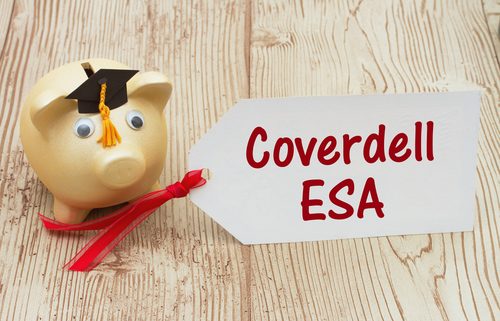What You Need to Know About a Self-Directed CESA Before Investing
Saving enough money for college is one of the top challenge’s parents face. According to one survey, over one-third of parents even listed it as their primary concern. But there are methods of saving for college that can allow for optimal tax benefits and easy contribution—assuming that you are familiar with the most popular college savings accounts. One of those account types is the Self-Directed CESA, which functions somewhat similar to a Roth IRA. Only with this account, you are saving for college and not retirement.
The Cost of College in the United States
First things first: why bother? Why not use a savings account?
The truth is, every dollar counts. You can see the National Center for Education Statistics’ numbers yourself: the cost of college is increasing every year, even when measured against constant dollars. In those statistics, college cost less than half as it did in 2015-2016, even after adjusting for modern monetary value.
Using a savings account where you can grow investments tax-free is a major advantage and can help you provide for the college tuition of a child, especially if you get started early.
What is a Self-Directed CESA?
The Self-Directed CESA, short for Education Savings Account, is an account type designed for family members to help contribute to a child’s education. Originally known as an Education IRA, Congress eventually expanded its capacities and positive attributes, renaming it the Coverdell ESA. A Self-Directed CESA is simply an account of this type wherein the primary holder makes the investment decisions within the account.
How Much Money Can I Contribute Toward a Self-Directed CESA?
The contribution limits are relatively low at $2,000 per year, which are after-tax contributions similar to those with a Roth IRA. However, because the funds in the account can then be withdrawn tax-free for education expenses later on in life, it makes a very simple, straight-forward way for saving for a college education.
Like a retirement account, there are some age limits on the Self-Directed CESA—once the child (in whose name the contributions were made all along) turns 30, the Coverdell ESA must either be rolled over to another family member or the funds must be given to the child.
The Benefits of Using a Self-Directed CESA
What’s to stop you from investing your money in a general brokerage, paying the taxes, and using unlimited contributions to help save for college? Well, nothing. But the tax-free growth of a Self-Directed CESA helps you maximize the value of your college savings. This is especially important for parents who do not have a lot of wiggle-room in their budget and want to ensure that every dollar they save is stretched as far as it will go.
But even with that in mind, let’s pay attention to some of the benefits of using a Self-Directed CESA:
- Allocating funds to a specific account means that there are specific rules and penalties for withdrawing it. You might be tempted to raid a generic savings account for funds in a pinch; the temptation is not there when you have allocated money to an education-specific account.
- Tax-free distributions. All your hard work will pay off when you can take distributions out of the savings account without taxes—realizing 100% of the value already in the account.
- Keeping up with inflating tuition prices. While you might be tempted to say that you’ll have enough money in the future to cover college costs, it’s hard to do that without planning. College tuition costs are rapidly inflating and planning for that cost increase requires investing.
Interested in learning more about Self-Directed IRAs? Contact American IRA, LLC at 866-7500-IRA (472) for a free consultation. Download our free guides or visit us online at www.AmericanIRA.com.




